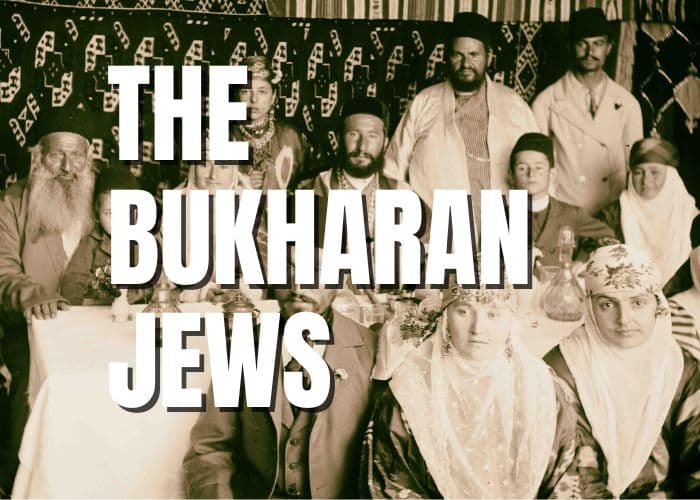Bukharan Jews: History, Communities Today, Culture, Religious Liturgy, Notable People and Accomplishments
Bukharan Jews are a unique Jewish community that originated in Central Asia and have a rich history, culture, and religious tradition. This article explores the history, present-day communities, cultural practices, religious liturgy, and notable figures and accomplishments of Bukharan Jews.
History
Bukharan Jews trace their origins to the ancient Jewish communities that settled in Central Asia along the Silk Road. Over time, they developed a distinct identity and culture that blended Jewish and Central Asian traditions. They spoke Bukhori, a dialect of Persian, and their cuisine and music were heavily influenced by local Central Asian flavors.
Throughout history, Bukharan Jews faced persecution and discrimination. In the 19th century, they were forced to pay extra taxes and were subjected to pogroms. During the Soviet era, their religious practices were restricted, and many were forced to abandon their faith. After the fall of the Soviet Union, many Bukharan Jews emigrated to Israel and the United States.
Communities Today
Today, there are approximately 50,000 Bukharan Jews living around the world, with significant populations in Israel, the United States, and Uzbekistan. The Bukharan Jewish community is tight-knit and deeply connected to their cultural and religious traditions.
In Israel, Bukharan Jews have created vibrant communities in cities like Jerusalem and Netanya. They have established their own synagogues and religious institutions, and their culture and cuisine have become an integral part of Israel’s diverse society.
In the United States, Bukharan Jews have settled in cities like New York and Los Angeles, where they have also established their own synagogues and community organizations. They have preserved their cultural practices through traditional celebrations like weddings and bar mitzvahs, where Bukharan music, dance, and food are prominent.
Culture
Bukharan Jews have a unique culture that reflects their Central Asian roots and their Jewish faith. Their cuisine is characterized by dishes like plov (a rice dish), shashlik (grilled meat skewers), and lagman (noodle soup). Bukharan music features instruments like the doira (a tambourine-like drum) and the sato (a stringed instrument), and is often accompanied by traditional Central Asian dance.
Bukharan Jews also have their own distinct wedding traditions, which include a week-long celebration and the traditional “Bukharan hat” that is worn by the groom. Bukharan Jewish women are known for their intricate embroidery work, which is often featured on traditional clothing like the chapan (a robe worn by men) and the Atlas (a headscarf worn by women).
Religious Liturgy
Bukharan Jews follow the Sephardic Jewish tradition and have their own unique liturgy and religious practices. Their synagogues are often ornately decorated with intricate tilework and calligraphy, and their prayer services feature traditional Bukharan melodies and chants.
Bukharan Jews also have their own distinct holiday traditions, such as the Purim Seudah, a festive meal that features traditional Bukharan dishes like plov and shashlik.
Bukharan Jews have a unique religious tradition that is distinct from other Jewish communities. They follow the Sephardic Jewish tradition, but also incorporate elements of local Central Asian culture into their religious practices. Bukharan Jews have their own liturgical language called Bukhori, which is a dialect of the Tajik language with many Hebrew and Aramaic loanwords.
Bukhori is used for prayer and religious ceremonies, and many Bukharan Jews also speak Russian and Hebrew. The Bukharan Jewish community has a rich history of producing prominent rabbis and religious leaders, and Bukharan Jews have made significant contributions to Jewish scholarship and religious practice.
Notable People and Accomplishments
Bukharan Jews have made significant contributions to fields like science, medicine, and the arts. Some notable figures include:
- Emmanuel Mane-Katz: A renowned Jewish painter and artist who was born in Ukraine and spent much of his career in France. Mane-Katz is known for his colorful depictions of Jewish life and culture, and his work has been exhibited in major museums around the world.
- Avraham Avinu: A prominent Bukharan rabbi and scholar who was known for his expertise in Jewish law and philosophy. Avraham Avinu wrote many important works on Jewish theology and ethics, and his teachings continue to influence Bukharan Jewish thought to this day.
- Avraham Edelstein: A prominent Bukharan businessman who founded the Edelstein Trading Company, which became one of the largest textile importers in the Soviet Union. Edelstein was also a philanthropist who supported many charitable causes in the Bukharan Jewish community.
- Bakhtiyor Jalolov: A Bukharan Jewish scientist and mathematician who has made important contributions to the field of probability theory. Jalolov’s work has been widely published in academic journals, and he has won numerous awards and accolades for his research.
- Michael Beizer: A Bukharan Jewish musician and composer who is known for his innovative fusion of traditional Bukharan music with contemporary jazz and rock. Beizer has released several albums of original music and has performed at major venues around the world.
Conclusion
Bukharan Jews have a rich and vibrant history that spans thousands of years, and their culture and traditions are a testament to their resilience and determination in the face of adversity. Despite facing numerous challenges throughout their history, Bukharan Jews have managed to preserve their unique identity and continue to make important contributions to Jewish and global society.








Ohr HaChaim Yomi – Emor